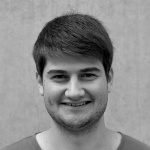Project description
Background
Architecture is of central ecological, economic, social and cultural relevance. Over the next 35 years, urban buildings for an additional 2.6 billion people need to be constructed. One of the key objectives of the Cluster of Excellence is to develop a methodology of “Co-Design” based on interdisciplinary research in architecture, structural engineering, systems engineering, robotics, building physics, computer science and social science. The Cluster will make a significant contribution to providing the prerequisites for a high-quality, liveable and sustainable built environment and a digital building culture.
State of the art
Based on the work of the first subproject with respect to alternative performance indicators of structures, such as imperfection sensitivity and buildability, the developed methods are further refined. With the help of an interactive agent-based modeling and simulation method (ABMS), it is possible to represent structural mechanical properties based on the redundancy matrix within the framework of structural design and to make them available to designers. This allows mechanical properties to be considered in addition to geometric constraints during design.
Project goals
Part of the work within the research project is concerned with the visualization of mechanical properties in early design phases, which are intended to support structural assessment and thus accelerate and improve the design process. A central aspect here is the visualization of results of three-dimensional beam structures.
In addition, a better prediction of the actual structure as well as its properties should be made possible, whereby relevant parameters of the structural response can be identified. The overall objective is to reduce the required partial safety factors in the design and the associated material costs of fiber composite structures.
Project data
Project title:
Computational Co-Design Framework for Fibre Composite Building Systems
(Research project 12-2 of research network 2)
Funding:
German Research Foundation (DFG), Cluster of Excellence EXC 2120 "Integrative Computational Design and Construction for Architecture (IntCDC)", GEPRIS project number 390831618
Project partner:
Institute for Building Structures and Structural Design (ITKE), University of Stuttgart
Institute for Computational Design and Construction (ICD), University of Stuttgart
Visualization Research Center (VISUS), University of Stuttgart
Institute for Textile and Fiber Technologies (ITFT), University of Stuttgart
Publications
- Forster, D., & von Scheven, M. (2025). The Redundancy Matrix as a Performance Indicator for Structural Assessment. Journal of Theoretical, Computational and Applied Mechanics. https://doi.org/10.46298/jtcam.13574
- Forster, D., Baker, W. F., & Bischoff, M. (2024). Structural Analysis Using the Redundancy Matrix and Graph Theory. In P. Block, G. Boller, C. DeWolf, J. Pauli, & W. Kaufmann (Eds.), Proceedings of the IASS 2024 Symposium Redefining the Art of Structural Design.
- Forster, D., Paul, S., Bischoff, M., & Sychterz, A. C. (2024). Structural Assessment of Architected Material Using the Redundancy Matrix and Experimental Testing. ASME Journal of Applied Mechanics, 91. https://doi.org/10.1115/1.4065840
- Forster, D., von Scheven, M., & Bischoff, M. (2024). Alternative Beurteilung von Tragwerken mit Hilfe der Redundanzmatrix. In B. Oesterle, A. Bögle, W. Weber, & L. Striefler (Eds.), Berichte der Fachtagung Baustatik – Baupraxis 15, 04. und 05. März 2024, Hamburg (pp. 67–74). https://doi.org/10.15480/882.9247
- Kannenberg, F., Zechmeister, C., Gil Pérez, M., Guo, Y., Yang, X., Forster, D., Hügle, S., Mindermann, P., Abdelaal, M., Balangé, L., Schwieger, V., Weiskopf, D., Gresser, G. T., Middendorf, P., Bischoff, M., Knippers, J., & Menges, A. (2024). Toward reciprocal feedback between computational design, engineering, and fabrication to co-design coreless filament-wound structures. Journal of Computational Design and Engineering, 11, Article 3. https://doi.org/10.1093/jcde/qwae048
- Forster, D., Kannenberg, F., von Scheven, M., Menges, A., & Bischoff, M. (2023). Design and Optimization of Beam and Truss Structures Using Alternative Performance Indicators Based on the Redundancy Matrix. In K. Dörfler, J. Knippers, A. Menges, S. Parascho, H. Pottmann, & T. Wortmann (Eds.), Advances in Architectural Geometry 2023 (pp. 455–466). De Gruyter. https://doi.org/10.1515/9783111162683-034
- Gil Pérez, M., Mindermann, P., Zechmeister, C., Forster, D., Guo, Y., Hügle, S., Kannenberg, F., Balangé, L., Schwieger, V., Middendorf, P., Bischoff, M., Menges, A., Gresser, G. T., & Knippers, J. (2023). Data processing, analysis, and evaluation methods for co-design of coreless filament-wound building systems. Journal of Computational Design and Engineering, 10, Article 4. https://doi.org/10.1093/jcde/qwad064
- Gil Pérez, M., Zechmeister, C., Kannenberg, F., Mindermann, P., Balangé, L., Guo, Y., Hügle, S., Gienger, A., Forster, D., Bischoff, M., Tarín, C., Middendorf, P., Schwieger, V., Gresser, G. T., Menges, A., & Knippers, J. (2022). Computational co-design framework for coreless wound fibre–polymer composite structures. Journal of Computational Design and Engineering, 9, Article 2. https://doi.org/10.1093/jcde/qwab081
- Oesterle, B., Geiger, F., Forster, D., Fröhlich, M., & Bischoff, M. (2022). A study on the approximation power of NURBS and the significance of exact geometry in isogeometric pre-buckling analyses of shells. Computer Methods in Applied Mechanics and Engineering, 397, Article 115144. https://doi.org/10.1016/j.cma.2022.115144
Researcher

Nicolai Grünvogel
M. Sc.Scientific Staff

Malte von Scheven
Dr.-Ing.Deputy Head of Institute




